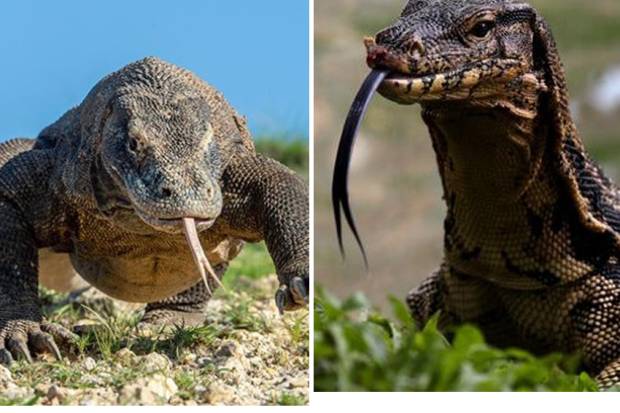On April 29, 2022, we addressed a curious question here on conservationsng: What was the creature in a video posted by Instablog9ja that many users mistakenly believed to be a Komodo dragon? Our investigation revealed that the animal in question was actually a monitor lizard. Today, we’ll delve deeper into why Komodo dragons are not found in Nigeria and explore the crucial role that habitat plays in wildlife distribution.
Understanding Komodo Dragons
The Komodo dragon (varanus komodoensis) is an awe-inspiring creature known for its impressive size and formidable predatory skills. As the world’s largest lizard, it can grow up to 10 feet long and weigh over 150 pounds. These carnivorous giants are not only skilled hunters but also scavengers, preying on a variety of animals, including deer and water buffalo.
Native Habitat
Komodo dragons are native to a few Indonesian islands, such as Komodo, Rinca, and Flores. These islands provide the hot, arid conditions and volcanic terrain that are ideal for the dragons’ survival. The unique environment supports their large size and hunting behaviours.
The Komodo dragon’s adaptations are perfectly suited to its native habitat. It thrives in the hot, dry climate of its Indonesian islands, with features like its robust body and powerful limbs aiding in its survival. These adaptations help the dragon cope with the harsh conditions and prey effectively in its natural environment.
Why Komodo Dragons Are Not Found in Nigeria
Geographical Differences
When comparing the geographical settings of Indonesia and Nigeria, the differences are striking. Indonesia’s volcanic islands, with their hot, dry climates, are in stark contrast to Nigeria’s tropical rainforest and savannahs. The diverse ecosystems in Nigeria, including humid rainforests and arid savannahs, are vastly different from the Komodo islands’ volcanic landscapes.
Lack of Suitable Habitat
Nigeria’s environment does not meet the specific needs of Komodo dragons. The climate and vegetation in Nigeria are not conducive to the Komodo dragon’s survival, which requires hot, dry conditions and specific types of prey. The absence of these crucial habitat features means that Komodo dragons cannot thrive in Nigeria.
The Role of Habitat in Wildlife Distribution
Habitat Requirements
Different species have unique habitat requirements based on their physiology and behaviours. For example, polar bears are adapted to the icy Arctic, while giraffes are suited to the African savannas. The specific needs of each species dictate where they can live and prosper.
The concept of habitat suitability extends beyond Komodo dragons. Tigers, for instance, are found in the forests of Asia, while penguins are native to the cold climates of the Southern Hemisphere. The presence or absence of these animals in various regions is directly linked to their habitat needs.
Adaptability and Extinction
Wildlife Adaptation
Some species can adapt to changing environments through migration or evolutionary changes. However, many species have specialized habitat needs that make adaptation difficult. Changes to their habitats can lead to migration, population declines, or even extinction.
Human Impact
Human activities, such as deforestation and urbanization, can significantly impact natural habitats. These changes can threaten wildlife by altering or destroying their environments, underscoring the importance of habitat preservation for species survival.
Conservation and Habitat Protection
Importance of Conservation
Conserving natural habitats is vital for maintaining wildlife diversity. Protecting these environments ensures that species have the conditions they need to survive and thrive. Conservation efforts play a crucial role in preserving the delicate balance of ecosystems.
Efforts in Nigeria
Nigeria is making strides in wildlife conservation through national parks and protected areas. These efforts aim to safeguard the country’s rich biodiversity and ensure that native species have the necessary habitats for their survival.
In summary, the absence of Komodo dragons in Nigeria highlights the significance of habitat suitability for wildlife distribution. Understanding the specific needs of different species and the impact of habitat changes helps us appreciate the complexity of wildlife distribution. By committing to habitat protection and conservation, we can support the survival of wildlife around the world.
Reflecting on why Komodo dragons are not found in Nigeria reminds us of the critical importance of preserving natural habitats. Let’s continue to protect and restore these environments to ensure that wildlife, wherever they may be, can thrive and flourish.

Leave a Reply
You must be logged in to post a comment.